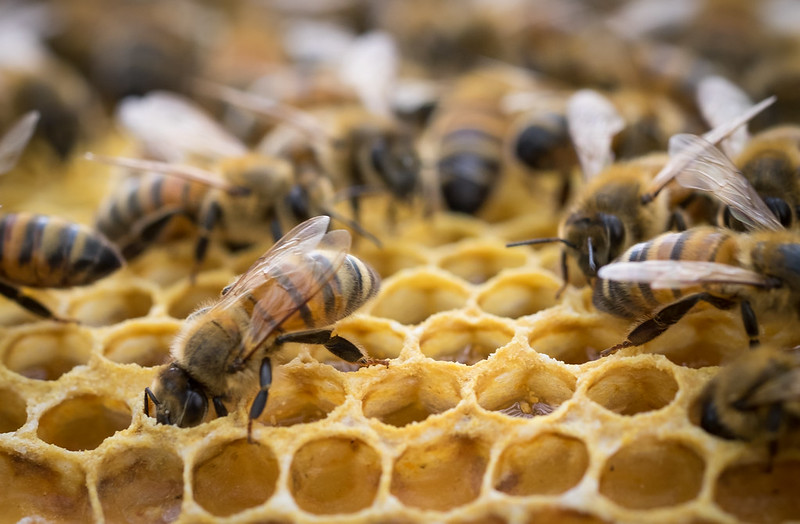Honeybee Research Gives Us Answers

Honeybee research has taught us so much about these important creatures. Did you know that there are 44 subspecies of honeybees that fall into 7 classes of honeybee species? We did not either until specialists did research on honeybees.
Honeybees are extremely important to the ecosystems they live in
All honeybees are extremely important to their ecosystems. As pollinators and honey producers, they not only provide other animals with a food source, and humans with honey and beeswax, but they are also the main pollinators of their ecosystems. Many forests and plants (including the crops that we plant for ourselves and livestock) would not survive without bees. Just like the honeybees would not survive with their main food source, flower nectar.
As bees move from flower to flower, feeding on the nectar, they are also collecting pollen on little hairs that are all over their body and depositing the pollen on the flowers they visit next. This is an important step to the fertilization of the plants in their ecosystems.
Honeybees also provide us with beeswax, which has many uses like candles, an ingredient in cosmetics, polishes and even pharmaceuticals. Beneficial antioxidant and anti-inflammatory properties are believed to be in beeswax.
Predators of honeybees
Each species of honeybee, no matter their location, has threats that could be detrimental to their colony. Predators like skunks and bears like honeybees and their honey just as much as humans do. Bears and skunks love honeybee hives and the honey within. Once a hive is discovered, both predators will continue to return to the hive and feast until there is no more honey, bees or hive left.
Unfortunately, research also shows that the honeybees’ greatest threat is humans. Poisons and insecticides not only kill the targeted insects that ruin our lawn and crops, they also poison the very species that we need for those plants to thrive.
Research identifies diseases that effect honeybees
Through honeybee research, it has been discovered that there are a few bacterial, fungal and viral diseases that can and will cause significant damage to a hive and its inhabitants.
American (AFB) and European Foulbrood (EFB) is a bacteria that, if it reaches the hive’s nursery, will kill the honeybee larva.
Chalkbrood is a fungal disease that infects honeybee larva. It is transmitted from spores from Asosphaera apis fungus. The fungus will grow on the larva causing it to turn white with cottony film. As the fungus grows on the larva, the white coloration will turn darker, even grey or black. Eventually it kills the honeybee larva it has infected.
CPV, or chronic bee paralysis virus, is another virus that is not only detrimental to bees but is also highly contagious. Bees become infected from encountering contaminated feces or by feeding on a food source infected with varroa mites. As the virus name suggests, CPV will cause abnormal trembling, shiny hairless abdomens and lose the ability to fly. In less than a week, paralysis sets in with death following.
John Ball Zoo is participating in the world-wide conservational efforts involving honey bees. Check out this article on their new residents.
In order to help the future of honeybees, more research needs to occur.
